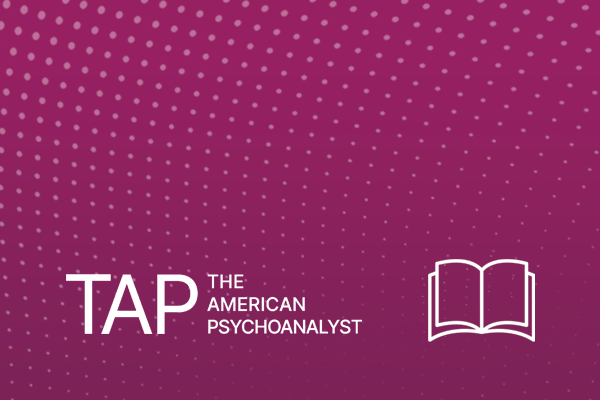The standard psychiatric diagnosis is a DSM-V diagnosis (Diagnostic and Statistical Manual of Mental Disorders, fifth edition), which is purely descriptive (i.e., describes a group of symptoms). This type of diagnosis says nothing about the causes or etiology of a person’s behavior or feelings, nor does it say anything about what mode of treatment is indicated.Psychoanalysis offers a deeper psychological explanation for the phenomenon (i.e., the person’s behavior). In other words, psychoanalysis offers not only descriptions, but etiology/causes that include the role of early environment, developmental factors, current stressors, and internal psychological factors.
Psychoanalysis can complement the more descriptive approach of the psychiatric DSM-IV diagnosis. For information about a diagnostic framework that describes both the deeper and surface levels of an individual’s personality, emotional and social functioning, and symptom patterns, refer to the Psychodynamic Diagnostic Manual.
Attention Deficit/Hyperactivity Disorder (ADHD)
Although many adults suffer from attention-deficit/hyperactivity disorder, or ADHD, symptoms begin in childhood, and therefore diagnosis and treatment usually do, too.
Children with ADHD often tend to extremes in their responses to the outside world. They might be both oversensitive and undersensitive to stimuli–completely unable to tolerate certain clothing fabrics, for instance, yet able to sleep through prolonged periods of loud noises. They’ll find it impossible either to stay with one activity for any length of time or to endure sudden changes. In the face of anxiety, they might exhibit extreme, even violent agitation, or an otherworldly calm.
The triggers for these symptoms are biological, and medication is almost always part of the ADHD treatment. And because ADHD manifests itself primarily through behavior, behavioral coaching is also often part of the ADHD regimen.
But the person with ADHD is after all a person, not just a disorder, a set of behaviors that annoy others, or a set of symptoms. In psychoanalytic treatment, the analyst can help the person with ADHD understand how it has affected her development, her relationships, and her school or work life. The psychoanalyst can help identify problems in self-regulation as well as the unique capacities a person with ADD often has. In psychoanalytic treatment, the person with ADHD can develop a usable narrative about her own history, and a comprehensive understanding about her unique nervous system and its complex and delicate interplay with her life.
Anxiety
Freud originally thought anxiety was a result of an accumulation of psychic energy–a sort of stoppage of sexual or aggressive drives, bottled up by repression. He later refined his concept to thinking of anxiety as a warning signal of a threatening catastrophe brought on by a conflict of forces in the individual’s mind.
Today, psychoanalysts have a more comprehensive view of anxiety and in treatment, endeavor to precisely define the source of the anxiety (is it triggered by separation, by exposure, by fear of humiliation, by fear of success, etc.) Is there an unconscious conflict triggering the anxiety?
Anxiety is a universal human experience, but some patients suffer from anxiety disorders, which are very painful, complex chronic conditions including panic disorder, obsessive compulsive disorder, phobias, and post-traumatic stress disorders. In all these conditions, the person responds physiologically and psychologically as if under a severe threat, even though they usually are aware rationally that they are not in actual danger.
A combination of psychoanalytic treatment with other treatment modalities such as behavior modification and medication can be extremely effective in serious anxiety disorders.
Bipolar Disorder
Bipolar disorder is another name for manic-depressive illness, and as the name suggests, it is an illness of opposites. Although sufferers can experience prolonged periods of stability, they also can suffer painful periods of depression or disorganizing periods of “elevated” mood. In more severe cases, psychosis can occur in association with these mood states.
Toward one end of the spectrum is hypomania, which can be characterized by feelings of mild euphoria and a pronounced increase in activity and productivity, rapid speech, and increased spending. Even more extreme on the same end of the mood spectrum is mania, which can lead to a loss of coherent thought, delusions and hallucinations.
On the other side of the mood spectrum is depression which is usually marked by listlessness and hopelessness. Severe depression can lead to inability to function, difficulty eating and sleeping, and thoughts of suicide.
The onset of bipolar disorder occurs most frequently in young adulthood.
Because bipolar disorder is a biological illness, stabilizing medications are essential for treatment. And as is often the case with such illnesses, psychoanalysis can’t offer a cure. But once a patient is stabilized, psychoanalysis can help a sufferer come to terms with the illness itself as well as the difficulties the illness has caused in his or her life and, as with any other analysis, to work with the person’s ambitions, goals, relationship and work difficulties.
Depression
Episodes of depression are characterized by feelings of guilt, social withdrawal, difficulty concentrating, tearfulness and shame, and by physical manifestations such as either having a very poor appetite and difficulty sleeping with accompanying anxiety and agitation, or by eating and sleeping much more than usual, with a sense of having very little energy. Sometimes upon awakening, a depressed person feels that it is almost impossible to face the day and has a gnawing sense of dread and a feeling of physical heaviness.
Psychoanalysts are aware that a propensity to this kind of depression often has genetic and biochemical origins. Early problems in mood regulation can negatively impact a child’s relationships, personality development and sense of self-regard. Additionally, traumas in early childhood such as abuse, neglect, separation or loss can impact a child psychologically and neurobiologically and cause a predisposition to depressive illness.
Psychoanalysts treat the impact that depressive illness has on an individual’s personality and sense of himself. Often people with depression suffer from feelings of vulnerability and shame and become frustrated about their difficulties, envious towards others who are appear to be more outgoing and untroubled. They can feel guilty about these feelings, with significant inhibitions as a result. Psychoanalysts help people with depression to recognize and deal with their excessive guilt, shame, humiliation, anger and other painful feelings. They help the depressed individual understand the impact that depression has had on their personality development and relationships.
Some depressed people are very sensitive to slights, disappointments in others and injuries to their self esteem and have become overly prone to humiliation and anger as a result. Psychoanalysts can help them understand the early experiences that led to these sensitivities and assist them in developing a more resilient sense of self. Additionally, troubling early relationships may sometimes lead to lifelong feelings of inner deadness, sadness, disconnectedness or emptiness that can coalesce into a later life depression.
Psychoanalytic understanding often helps the person with depression avoid the vicious emotional cycles that can cause or contribute to depressive episodes.
Eating Disorders
Individuals with eating disorders are overly preoccupied with the foods they eat, when and how they eat them, and their weight and appearance, sometimes to a life-threatening degree.
Bulimia is characterized by binge eating followed by purging, often through vomiting, excessive exercise, extreme fasting or laxative abuse. Anorexics are so fearful of gaining weight that they put themselves on a starvation diet. At the other extreme, the obese eat themselves into a life-threatening state. In general, eating disorders take one of the basic needs for human survival and turn it into a means for personal extinction.
Because these disorders tend to first surface in adolescence, and because the persons they affect are mostly female, they may arise in part from anxiety about meeting society’s impossibly high standard of the perfect body or from conflicts about sexuality. The psychoanalytic perspective focuses on the particular form of the disorder and what it might mean for the individual. Several studies have found that treatments relying on medication and behavioral therapy alone are effective for only 40 to 60 percent of patients; psychoanalysts hold that a deeper, personal understanding can lead to both mental and physical health.
Obsessive-Compulsive Disorder
Although the term obsessive-compulsive has become so commonplace, the two words actually carry specific meanings.
“Obsessive” refers to a thought pattern where the same words or phrases recur, cycling endlessly. “Compulsive” describes equally repetitious, and often outwardly bizarre, actions. Obsessive-compulsive personality refers to be hyper- rational individuals (often male) who are so focused on the logical side of life that they have largely lost touch with the emotional side. When an especially unacceptable or intolerable emotion such as anger or anxiety threatens to overwhelm them, they unconsciously try to counteract it by trying to exert greater control over their minds and thoughts.
Obsessive-compulsive disorder is one of the anxiety disorders. It almost certainly has a strong biological component. Persons suffering from OCD experience intense anxiety and develop specific rituals – sometimes quite bizarre – in order to relieve the anxiety. But an increasing need to perform the rituals becomes an enormous burden in itself. There is debate about whether the repetitive gestures, avoidances and rituals have psychological meaning. But there are certainly core psychological issues involved in OCD such as an excessive need for control, an ability to accurately assess risk, and a distancing from normal life functions. Psychoanalysis can help with the mind part of what is very clearly a disorder based on dysfunction of mind, behavior and thought. Additionally, psychoanalysis can help with the impact having such an invasive and pervasive mental problem has on an individual’s development, relationship and life course.
Panic Disorder
A person having a panic attack experiences a period of intense fear or discomfort while physically feeling some combination of these symptoms: heart palpitations, feelings of dizziness or lightheadedness, trembling or shaking, nausea or abdominal distress, chills or hot flushes, shortness of breath, or a tightness around the chest so extreme that it can feel like a heart attack. Persons suffering a panic attack can feel as if they’re about to die, to “lose control” or “go crazy.” They may feel as if the world seems unreal, or may feel detached from themselves. When panic attacks recur and are followed by significant fears of their reappearance and by changes in behavior- such as by avoiding circumstances that the person is afraid will trigger an attack- the person is diagnosed as having panic disorder.
A sufferer often feels that the panic attacks are coming out of nowhere, but in psychoanalytic consultation and treatment, triggers are discerned for the anxiety. Fears about imminent separation or loss, or about one’s aggression or sexuality, can cause anxiety, as can the fear of loss of personal control. Often panic attacks manifest themselves in the context of major life changes – graduation, a new job, a promotion – that have conflicted underlying meaning for the individual . The psychoanalyst helps the anxious person to regain a sense of emotional control by considering the meaning of the symptoms in the context of his life and relationships. Because the predisposition to panic attacks has a biological underpinning, medications may be used in conjunction with psychoanalytic treatment. But studies have shown that a combination of medication and therapy works best for this problem.



